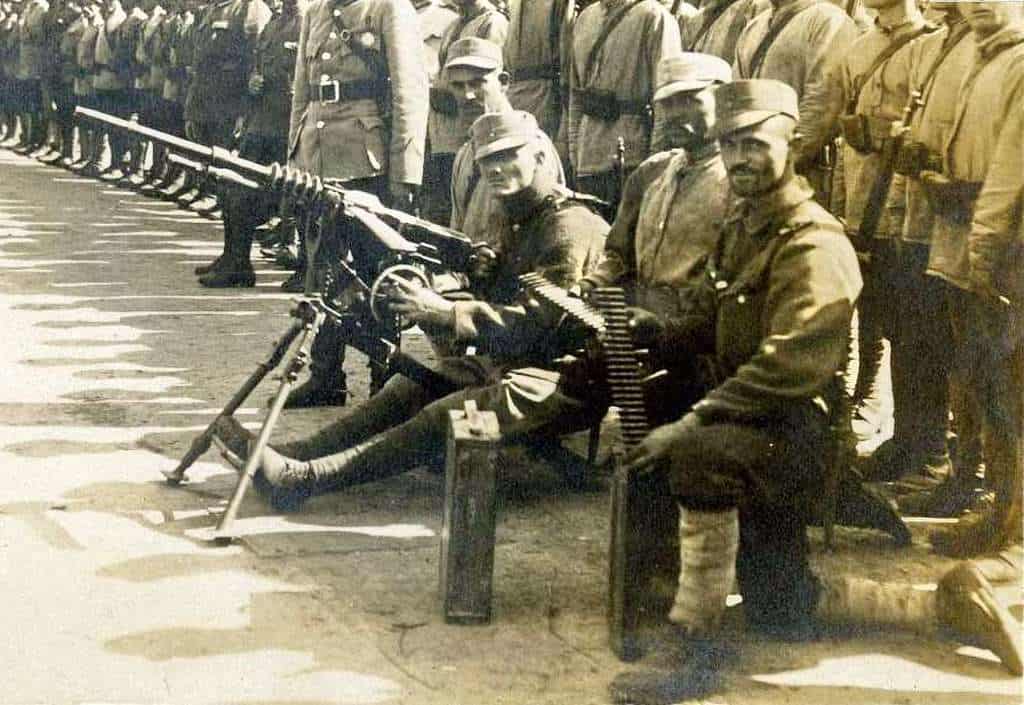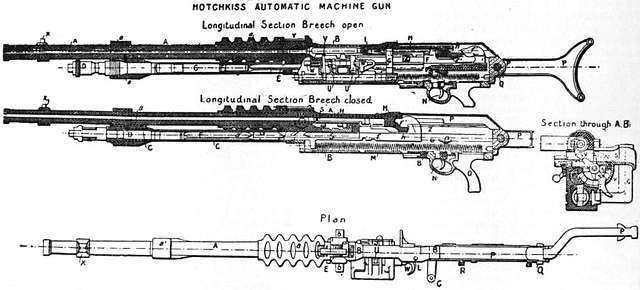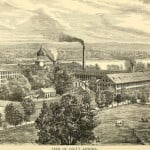
In the late 19th and early 20th centuries, technological advancements were rapidly shaping the nature of warfare. One invention that came to prominence during this period was the machine gun, a weapon designed to increase firepower and give armies significant advantages on the battlefield. Among the early models that gained attention was the M1896 Hotchkiss, an innovative piece of machinery that exemplified both ingenuity and the grim reality of modern warfare.
Hotchkiss: The Intersection of Innovation and Warfare
Origins: A Marriage of American Innovation and French Engineering
The M1896 Hotchkiss machine gun originated from the collaborative efforts of American entrepreneur Benjamin B. Hotchkiss and French engineers who worked at the Hotchkiss et Cie factory in Saint-Denis, near Paris. Hotchkiss, originally from Connecticut, had moved to France after the American Civil War and founded the factory, which initially specialized in manufacturing cannons and shell fuses. The M1896 was a direct development from earlier Hotchkiss designs, incorporating several mechanical improvements that rendered it more reliable and easier to operate.

Design and Mechanism: Advancements in Firepower
One of the distinguishing features of the M1896 Hotchkiss was its revolving feed system. Unlike its contemporaries that employed belt-fed systems, the Hotchkiss used feed strips, which allowed for smoother and more reliable feeding of ammunition. The system operated through a gas piston, propelling the rounds at a rate of approximately 600 rounds per minute—a significant leap in firepower compared to older models. The weapon was air-cooled, reducing the need for water-cooling systems that were cumbersome and impractical in field conditions.
The M1896 was chambered for several different calibers over its lifespan, including 6.5mm, 7mm, and 8mm. Its design was adaptable, with versions tailored for use on tripods, cavalry mounts, and even naval applications. The weapon’s versatility was a testament to the ingenuity of its design and the forward-thinking nature of its creators.
Military Adoption: A Global Presence
The M1896 found its way into numerous military arsenals worldwide. France, the country of its birth, was one of the first nations to adopt the machine gun, using it extensively during colonial campaigns and in the First World War. Other countries, such as Japan, Spain, and the United States, also incorporated this machine gun into their military hardware. During the Spanish-American War of 1898, the weapon was used by American troops, showcasing its capabilities on a larger stage.
However, it was in World War I where this machine gun truly gained its reputation. The weapon was used to devastating effect in the trenches, providing much-needed firepower to troops bogged down in static warfare. The machine gun had come of age, and this model was an emblem of this evolution.
Upgrades and Variants: Adapting to Changing Times
As with any piece of military hardware, the M1896 underwent several modifications and upgrades throughout its service life. Newer versions, such as the M1900 and M1909, incorporated improvements in ergonomics and firing mechanisms. These upgrades made the weapon more user-friendly and effective, further solidifying its place in military arsenals.
The Hotchkiss M1914, a subsequent variant, was particularly influential during World War I. It was a heavier model with a superior rate of fire and a more robust design, ideal for the brutal conditions of trench warfare. The M1914 was a mainstay for the French Army throughout the conflict and remained in service for many years afterward.
Legacy: An Instrument of Transformation
The M1896 and its variants were more than just weapons; they were instruments that signaled a transformation in how warfare was conducted. The machine gun changed the dynamics of battle, rendering old tactics obsolete and forcing military strategists to rethink their approaches. The grim lethality of these advancements was evident in the casualty figures of World War I, but their impact on military thinking and doctrine was immeasurable.
In summary, the M1896 was a pioneering machine gun that made significant contributions to the development of modern warfare. From its unique revolving feed system to its adaptability across different military applications, this weapon was an innovation that shaped the battlefield for decades. Its legacy is not merely that of a weapon, but as a transformative force in the annals of military history.



If you know of any forums or sites that should be referenced on this listing, please let us know here.



